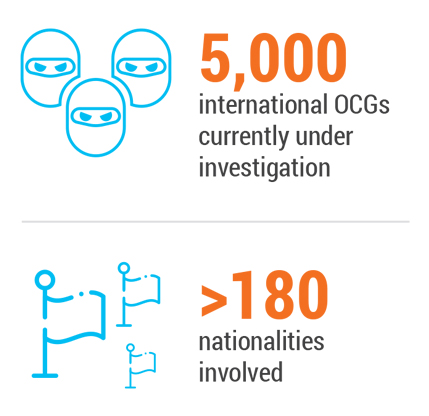The OCGs and individual criminals operating in the EU are highly diverse. They range from large ‘traditional’ OCGs to smaller groups and loose networks supported by individual criminals, who are hired and collaborate ad hoc. More than 5,000 OCGs operating on an international level are currently under investigation in the EU. This figure does not necessarily reflect an overall increase in organised crime activity in the EU compared to 2013, when Europol reported on the activities of 3,600 internationally operating OCGs in the EU. This increase is primarily a reflection of a much improved intelligence picture. The increase also points to the emergence of smaller criminal networks, especially in criminal markets that are highly dependent on the internet as part of their modi operandi or business model. Overall, the number of OCGs operating internationally highlights the substantial scope and potential impact of serious and organised crime on the EU.
The criminal markets involving illicit drugs, trafficking of human beings and migrant smuggling attract the largest numbers of OCGs and continue to generate the greatest profits among the various criminal markets in the EU. However, emerging crime phenomena such as the online trade in illicit goods and services may eclipse these markets in size and profits in the future. The online trade in illicit goods and services is no longer merely a modus operandi, but an expanding, highly dynamic and substantial criminal market itself.
Over the past few years, criminals of more than 180 nationalities were involved in serious and organised crime in the EU. The majority of OCGs operating on an international level are composed of members of more than one nationality. Nonetheless, the majority of the suspects (60%) involved in serious and organised crime in the EU are nationals of a Member State.
